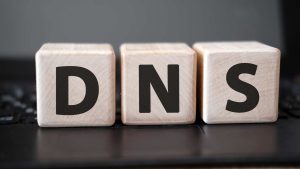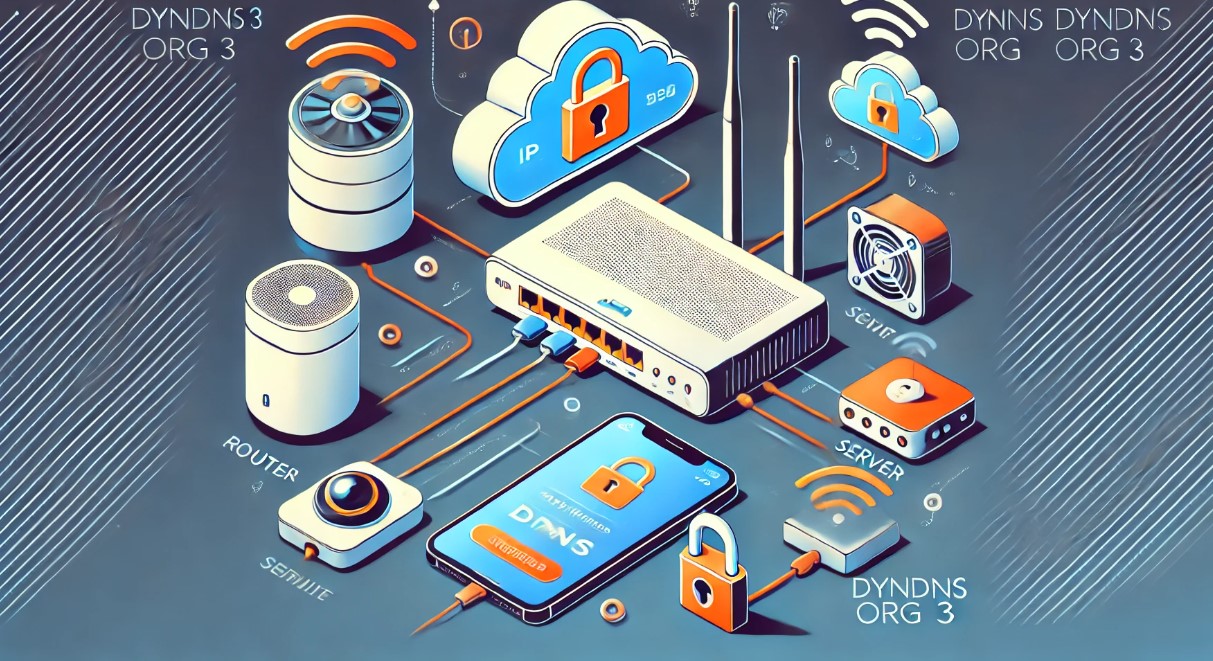As more devices and networks become integrated into our daily lives, managing and securing remote access to these systems is increasingly important. Dynamic DNS (DDNS) services allow users to overcome the challenges of constantly changing IP addresses by providing a stable, user-friendly domain name.
This enables seamless access to home servers, surveillance cameras, or file-sharing systems remotely. Mysk2 Dyndns Org 3 is one such service offering a flexible, secure, and cost-effective DDNS solution.
In this guide, we’ll explore how you can set up and optimize mysk2.dyndns.org 3 to access your devices remotely, even when your IP address changes.
What is Dynamic DNS (DDNS)?

Dynamic DNS (DDNS) is a service that updates the Domain Name System (DNS) to point to a device’s new IP address whenever it changes. Unlike a static IP address, which remains constant, dynamic IP addresses are assigned to most home and office internet connections by Internet Service Providers (ISPs).
Without DDNS, remote access would become difficult, as the device’s address would frequently change. DDNS solves this problem by mapping a domain name to your device’s changing IP address, ensuring continuous access.
For instance, with DDNS, you can access your home network by typing something like yourdomain.mysk2.dyndns.org instead of manually checking and inputting a new IP address every time it changes.
How Does Dynamic DNS Work?
Dynamic DNS operates by linking your network’s dynamic IP address to a static domain name. This is achieved through a DDNS client, which runs on your router or a computer within your network.
The client monitors the IP address assigned to your home network by the ISP. When the IP address changes, the client sends the new IP information to the DDNS service, which updates the domain name records accordingly.
For example:
- You register a mysk2.dyndns.org 3 domain.
- Your router is assigned a new IP address.
- The DDNS client detects this change and updates the mysk2.dyndns.org 3 domain with the new IP address.
This automation ensures that you can access your network or devices remotely without worrying about changing IP addresses.
Why Should You Use Mysk2 Dyndns Org 3 for Remote Access?

Dynamic DNS services like mysk2.dyndns.org 3 offer several advantages:
- Cost-effective alternative to static IPs: Purchasing a static IP address from your ISP can be expensive. Mysk2 Dyndns Org 3 provides a far more economical solution.
- Access from anywhere: You can access your devices remotely from any location, which is invaluable for managing servers, IP cameras, or smart home devices.
- Automatic IP update: Whenever your IP address changes, Mysk2 Dyndns Org 3 automatically updates your domain to ensure uninterrupted access.
- Ease of setup: The service is relatively easy to set up and maintain, making it suitable even for users with minimal technical expertise.
- Subdomain support: You can create subdomains for different devices or network segments, allowing better organization and control over your network infrastructure.
How Do You Set Up Mysk2 Dyndns Org 3?

How Do You Create a Mysk2 DynDNS Account?
- Visit the Mysk2 Dyndns website: Go to the mysk2.dyndns.org website and sign up for an account.
- Choose your domain: During registration, you’ll select a domain name, such as myhome.mysk2.dyndns.org, that will be linked to your dynamic IP address.
- Complete registration: Confirm your account via email, then log in to start setting up your domain.
How Do You Configure Your Router for DDNS?
Configuring your router for DDNS ensures that your network devices (like security cameras or remote servers) can be accessed from anywhere using your DDNS domain.
- Log in to your router’s admin page: Typically, you can access the router settings by typing your router’s IP address (usually 192.168.0.1 or 192.168.1.1) into a web browser.
- Find DDNS settings: Most routers have a section in their settings for Dynamic DNS. This may be located under “Advanced Settings” or “Network Settings.”
- Input your credentials: Enter the DDNS details you created in the mysk2.dyndns.org account (username, password, and domain).
- Save settings and enable port forwarding: Ensure port forwarding is enabled for devices that need to be accessed remotely (e.g., CCTV cameras or home servers).
How Do You Install the DDNS Client?
The DDNS client helps automate IP updates so that you don’t have to monitor and update your domain manually. Here’s how to set it up:
- Check for DDNS client support on your router: Many modern routers have built-in support for DDNS services. If yours does, you can configure DDNS directly through the router’s settings.
- Install client software on a computer: If your router doesn’t support DDNS, you can install a DDNS client on a computer within the network. This client will communicate with the mysk2.dyndns.org 3 service to automatically update your IP whenever it changes.
How Do You Test and Troubleshoot Mysk2 Dyndns Org 3 Setup?

How Do You Test Remote Access with Mysk2 Dyndns Org 3?
Testing your DDNS setup ensures everything is working correctly. Follow these steps to verify:
- Use a device outside of your network: Connect to a different network (e.g., mobile data or a public Wi-Fi) and enter your mysk2.dyndns.org 3 domain in a browser or remote access tool.
- Check for connection: If everything is set up correctly, you should be able to access your devices, such as a home server or surveillance camera, using the domain name.
What Are Common Issues with Mysk2 Dyndns Org 3?
Several common issues may arise, but most can be resolved with simple troubleshooting:
- IP conflicts: Ensure that devices on your local network have unique local IP addresses.
- Incorrect port: Double-check your router’s port forwarding settings to make sure traffic is directed correctly to the devices you want to access.
- DNS propagation delays: DNS changes may take some time to propagate, so if you just set up your domain, wait a few hours before trying again.
What Are the Best Practices for Managing Dynamic IPs with Mysk2?
To ensure long-term reliability and security with Mysk2 Dyndns Org 3, follow these best practices:
- Monitor IP changes: Check your IP periodically using a service like whatismyip.com or via your router’s logs.
- Enable automatic updates: Configure your router or client to automatically update your IP address to avoid losing remote access.
- Use encryption: Always use encryption protocols such as SSL/TLS or a VPN for secure remote access. This adds a layer of protection when accessing your network.
- Restrict access: Configure access control lists (ACLs) on your router or firewall to allow remote access only to trusted devices.
What Security Considerations Should You Take for Remote Access?
Security is a primary concern when setting up remote access via DDNS. Here’s how to ensure that your connection remains safe:
- Use strong, unique passwords: To prevent unauthorized access, your router, DDNS account, and remote access services should have strong, unique passwords.
- Enable two-factor authentication (2FA): Where possible, enable 2FA to add an extra layer of security to your accounts.
- Use a VPN: Virtual Private Networks (VPNs) encrypt traffic, making it much harder for attackers to intercept data when accessing your home network remotely.
- Update firmware: Keeping your router’s firmware up to date ensures you have the latest security patches and features.
How Do You Ensure Long-Term Reliability with Mysk2 DynDNS?

- Regularly test your connection: Periodically check your remote access setup to ensure everything functions as expected.
- Use backup domains: If possible, set up a backup DDNS service to ensure redundancy. This way, if one domain fails, you can still access your network through another.
- Update router firmware: Routers with out-of-date firmware may have security vulnerabilities. Regular updates can help prevent issues.
What Are the Common Mistakes to Avoid When Setting Up Mysk2 Dyndns Org 3?
Avoid these common pitfalls to ensure a smooth setup:
- Incorrect port forwarding: Ensure you’re forwarding the right ports for the device or service you want to access remotely.
- Skipping security configurations: Always set up firewalls, VPNs, and access controls to safeguard your network from unauthorized users.
- Failing to monitor IP changes: Neglecting to monitor your network’s IP address could lead to a loss of remote access if the IP changes.
How Do You Download Mysk2 Dyndns Org 3 for Android?
For users who want to manage their Mysk2 Dyndns Org 3 setup on the go, the Android app offers a convenient solution. Follow these steps to download and configure the app:
- Access Google Play Store: Open the Google Play Store on your Android device.
- Search for “Mysk2 Dyndns Org 3”: Enter the app name into the search bar and locate the official app.
- Download and install: Once you’ve found the correct app, click “Install” to download it onto your device.
- Configure the app: After installation, open the app and enter your mysk2.dyndns.org credentials. These include your username, password, and the domain name you set up during account creation.
- Manage your domain: The app allows you to monitor IP changes, trigger manual updates, and check the status of your dynamic DNS service. This is especially useful if your network’s IP address changes frequently, as it ensures you’re always connected.
With the app, you can access your network remotely from your phone, making it ideal for mobile network monitoring or managing devices like IP cameras and servers while away from home.
How Do You Download Mysk2 Dyndns Org 3 for iOS?

For iOS users, mysk2.dyndns.org 3 is also available as an app for iPhone and iPad devices. Here’s how to get started:
- Open the App Store: On your iPhone or iPad, navigate to the Apple App Store.
- Search for “Mysk2 Dyndns Org 3”: Type the app name into the search bar to find the official app.
- Install the app: Tap the download button to install the app on your device.
- Configure your domain: Once the app is installed, open it and input your mysk2.dyndns.org account information (username, password, and domain name).
- Manage your remote access: The app allows you to manage domain updates, monitor your network’s IP address changes, and troubleshoot connectivity issues directly from your iPhone or iPad.
The iOS app offers a streamlined way to manage your DDNS setup, ensuring you can stay connected to your home or office network, even while moving.
Conclusion
Setting up Mysk2 Dyndns Org 3 provides a reliable and cost-effective way to access your network remotely without needing a static IP.
By configuring your router, ensuring proper security measures, and utilizing mobile apps for Android and iOS, you can manage your home or office network with ease, whether you’re at home or halfway across the world.
The Mysk2 Dyndns Org 3 service automates IP updates and simplifies remote access, making it an essential tool for both casual users and IT professionals.
FAQs about Mysk2 Dyndns Org 3
What is the primary role of Dynamic DNS?
Dynamic DNS maps a changing IP address to a consistent domain name, making remote access possible without needing a static IP.
Do I need a static IP for using Mysk2 Dyndns Org 3?
No, Mysk2 Dyndns Org 3 works with dynamic IP addresses, eliminating the need for a costly static IP from your ISP.
How secure is remote access using Dynamic DNS?
The security of DDNS depends on your network setup. Using VPNs, firewalls, and strong passwords is crucial to maintaining security.
How can I automate IP updates in my network?
Installing a DDNS client on your router or using built-in DDNS settings can automate IP updates and ensure seamless remote access.
What are the common issues when setting up DDNS?
Common issues include incorrect port forwarding, misconfigured router settings, or DNS propagation delays, all of which can affect connectivity.
Can I use Mysk2 Dyndns Org 3 for business purposes?
Yes, Mysk2 Dyndns Org 3 is suitable for businesses looking to manage servers or access critical systems remotely.
How to resolve port forwarding issues?
Double-check your router’s port forwarding settings to ensure that the correct ports are open and directed to the right devices within your network.




